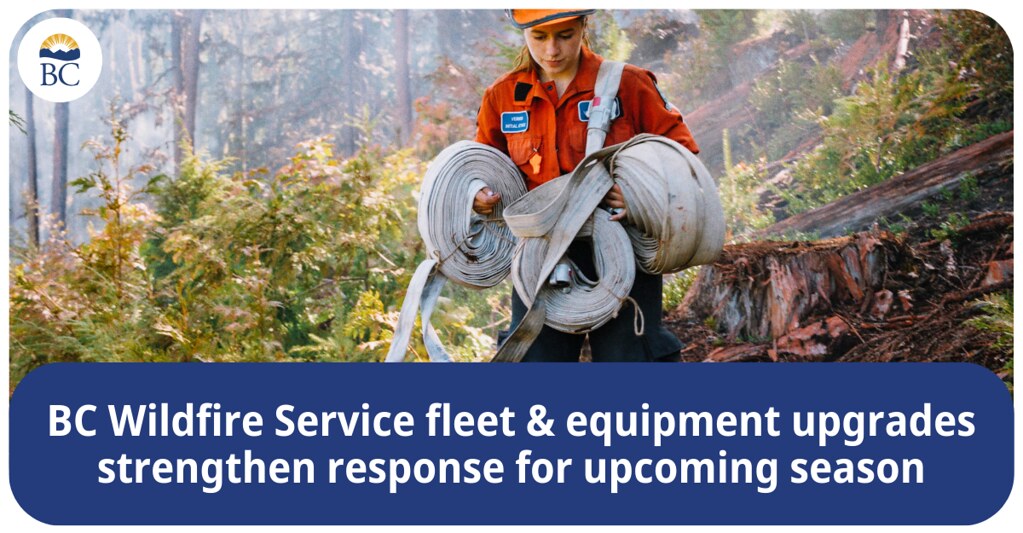B.C. boosts wildfire-fighting fleet, equipment
The Province is taking action to prepare for the upcoming wildfire season by upgrading and expanding B.C.’s firefighting aviation and ground fleet, as well as equipment for ground crews.
“As we head into the spring and summer months, we are reminded of last year’s devastating wildfires and the impact they had on people and communities around the province,” said Bruce Ralston, Minister of Forests. “The impacts of climate change are arriving faster than predicted, and alongside the task force, we are supporting the wildland firefighters who work tirelessly to protect us under the most extreme conditions. By increasing our resources on the ground and in the air, we will have a greater ability to respond to wildfires when and where they happen.”
Drawing on feedback from the Premier’s expert task force on emergencies, the Province is strengthening its response to wildfire emergencies by expanding the amount of firefighting tools available to crews to provide broader response capabilities and keep people and communities as safe as possible. Upgrades are being made to firefighting equipment and fire camp infrastructure, which are critical to the safety and well-being of wildland firefighters.
Nearly $16 million has been invested ahead of April 2024 to expand BC Wildfire Service’s on-the-ground firefighting equipment, including pumps, fire camp equipment, safety gear, and medical and hygiene equipment. Additional investments have been made, including two mass water-delivery systems, that can be used for fire suppression and flood operations.
“I am impressed with the rapid work of the Province to put needed additional firefighting resources in service for this year,” said Thom Porter, task force member and former director of CAL Fire. “The dry winter emphasizes the need for securing these resources is now.”
This year, BC Wildfire Service will continue to upgrade its existing aviation fleet to include additional plane and helicopter agreements, with a focus on a diverse and modern set of aircraft suited for B.C.’s vast and challenging terrain. BC Wildfire Service will also continue to trial night-vision technology used by aviation crews to survey and support fire suppression during nighttime operations.
The BC Wildfire Service’s existing aviation fleet includes the air tanker and skimmer groups, light to heavy lift helicopters, and parattack jumpships, located at more than 14 bases around the province. Wildfire-fighting aircraft take on a number of roles during the fire season, such as water and retardant delivery, crew and personnel transportation, gear delivery, logistics support, fire patrols and infrared scanning.
The Ministry of Forests and Ministry of Emergency Management and Climate Readiness continue to work directly with the Premier’s expert task force on emergencies to incorporate feedback into practice as they prepare for the 2024 season.
Quick Facts:
- The BC Wildfire Service maintains three domestic and international resource-sharing agreements, and dozens of contract opportunities, in various resource equipment and service areas.
- During the 2023 wildfire season, approximately 1,750 personnel came from outside the province to support the wildfire fight in B.C.
Learn More:
To learn more about wildfire contract opportunities, visit: https://www2.gov.bc.ca/gov/content/safety/wildfire-status/about-bcws/employment-and-contracts/contract-opportunities
To learn more about wildfire aviation, visit: https://www2.gov.bc.ca/gov/content/safety/wildfire-status/wildfire-response/wildfire-personnel-and-response-tools/wildfire-aviation



























Comments